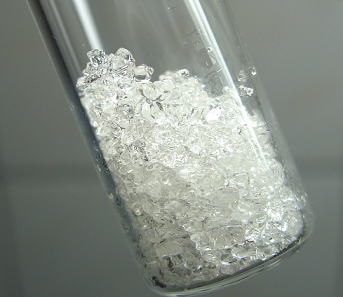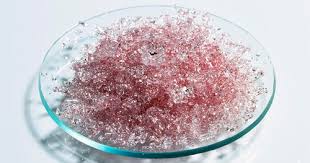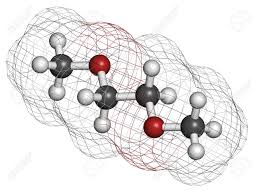What are the Medical and Health Uses for Phenol?
Phenol is a type of organic compound. While toxic to consume on its own, it’s available in tiny doses in many household products like mouthwash and spray cleaners.
In its pure form, it may be colorless or white. It has a mildly sugary scent that might remind you of somewhere that’s sterile, such as a hospital room. In limited quantities, it’s available for several medical and health-related uses.
What is phenol used for?
Pure phenol is used in certain medical procedures and as an ingredient in numerous treatments and laboratory applications.

Phenol Injection
Phenol can be injected into your muscles to treat a condition known as muscle spasticity. This happens when your brain doesn’t communicate properly with your spinal cord and nerves. It causes your muscles to become tight.
Muscle spasticity can even interrupt your ability to walk or talk. It can be caused by conditions like Parkinson’s disease, cerebral palsy, or brain trauma.
A phenol injection helps limit the signals sent from your nerves to your muscles that cause contractions. This allows you to move more easily and feel less discomfort.
This treatment is similar to getting a botulinum toxin A (Botox) shot. But phenol tends to be more useful for large muscles.
Chemical matrixectomy
Phenol is commonly used in surgeries for ingrown toenails. It’s used on more severe ingrown toenails that don’t respond to other treatments. The phenol, in the form of trichloroacetic acid, is used to stop the nail from growing back.
A small 2001 studyTrusted Source of 172 people found that 98.8 percent of those who received a chemical matrixectomy with phenol cauterization had successful results.
However, phenol matrixectomy may be falling out of favor. A 2014 paperTrusted Source in the Journal of the American Podiatric Medical Association found that sodium hydroxide had fewer complications than phenol as an ingrown toenail treatment.
Vaccine preservative
Phenol is used as a preservativeTrusted Source in at least four vaccines. It helps keep bacteria from growing in and contaminating the vaccine solutions.
Sore throat spray
Phenol is used in some throat sprays that can help numb your throat and relieve symptoms caused by a sore throat, or irritation in the mouth caused by canker sores.
You can buy over-the-counter phenol spray almost anywhere. The most common brand is Chloraseptic. It contains about 1.4 percent phenol.
Phenol spray is safe to use at the recommend dose for a short time. But using too much or giving it to children younger than 3-years old can be unsafe. Read the ingredients label carefully to make sure you’re not allergic to any other components of the spray.
And if your sore throat is accompanied by a fever, nausea, and vomiting, see a doctor as soon as possible before using phenol for throat soreness.
Oral analgesics
Many phenol-based products that help relieve pain or irritation in or around your mouth can also be bought over-the-counter to numb tissues in the mouth and lips.
These products are used as a short-term treatment for the symptoms of pharyngitis. This happens when your throat gets inflamed from a bacterial or viral infection.
Phenol-based products for mouth and throat pain are widely available and safe to use in small doses. But throat sprays and antiseptic liquids shouldn’t be used for more than a couple days at a time. And if you’re having symptoms like fever and vomiting, see a doctor.
Phenol liquid
Phenol liquid is often used in molecular biology with trichloromethane and chloroform to separate RNA, DNA, or proteins, and isolate them in the pure form.
This process is known as liquid-liquid extraction. It’s done by adding an equal amount of phenol and chloroform to a solution of cells or tissues.
The phenol-chloroform mixture separates molecules based on how soluble the tissue sample is in that solution. The pH level of phenol helps separate the DNA and RNA.
Soap and antiseptic
Soap containing phenol-based compounds is often called carbolic soap. It’s been used as an antiseptic during surgery since at least 1867.
It was also a common fixture in state schools in England and Scotland until the 1980s. It’s remembered by millions in the United Kingdom for its distinct smell and red streaks it left on bathroom sinks.
Carbolic soap is still widely used throughout the world. It’s also a common tool used to assist countries who receive foreign aid from organizations like the Red Cross or Doctors Without Borders. It provides effective, low-cost hygiene to poverty-stricken communities.
Over time, pure phenol has been replaced by some of its derivatives as an antiseptic. One derivative is n-hexylresorcinol, which can be found in cough drops. The compound, butylated hydroxytoluene (BHT), replaced phenol as a food antioxidant.
Related articles And Qustion
See also
Lastest Price from Phenol manufacturers
US $100.00/kg2025-04-21
- CAS:
- 108-95-2
- Min. Order:
- 1kg
- Purity:
- 99%min
- Supply Ability:
- 200TON

US $1746.00/T2025-03-26
- CAS:
- 108-95-2
- Min. Order:
- 1T
- Purity:
- 99%
- Supply Ability:
- 1000T




